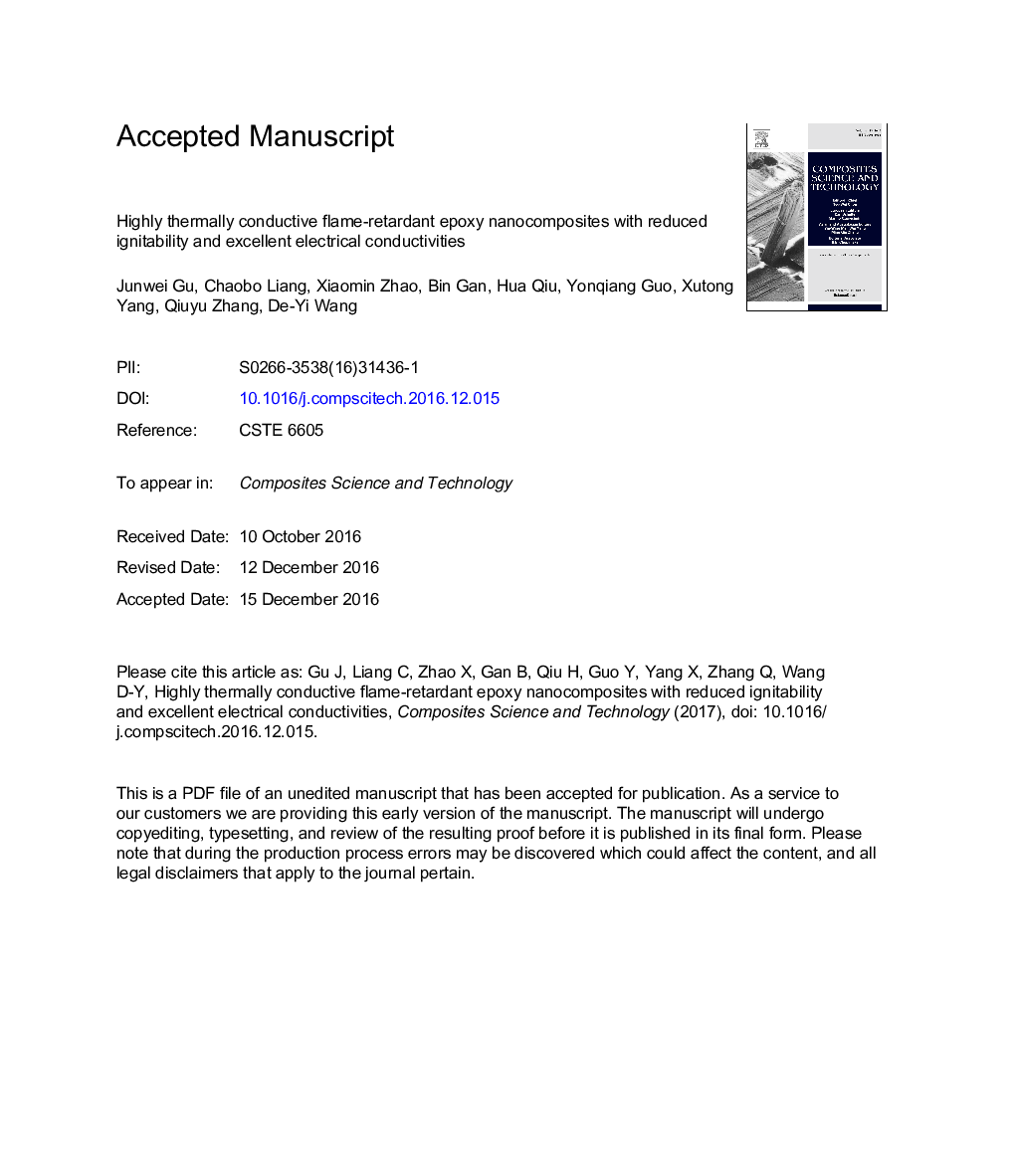| Article ID | Journal | Published Year | Pages | File Type |
|---|---|---|---|---|
| 5022342 | Composites Science and Technology | 2017 | 30 Pages |
Abstract
A highly efficient phenylphosphonate-based flame-retardant epoxy resin (FREP) was firstly prepared from phenylphosphonic dichloride (PPDCl) and allylamine (AA). Functionalized graphite nanoplatelets (fGNPs) fillers were then performed to fabricate the fGNPs/FREP nanocomposites via mixing followed by casting method. The thermally conductive coefficient (λ), thermal diffusivity (α), flame retardancy, electrical conductivities and thermal stabilities of the fGNPs/FREP nanocomposites were all enhanced with the increasing addition of fGNPs fillers. The λ and α value of the fGNPs/FREP nanocomposite with 30 wt% fGNPs fillers was increased to 1.487 W/mK and 0.990 mm2/s, about 7 times and 6 times for that of pure FREP matrix (0.234 W/mK and 0.170 mm2/s), respectively. And the corresponding electrical conductivity was also increased to 5.0 Ã 10â4 S/cm, far better than that of pure FREP matrix (1.0 Ã 10â12 S/cm). In comparison with that of pure FREP, the THR and TSP value of the fGNPs/FREP nanocomposite with 15 wt% fGNPs fillers was decreased by 37% and 32%, respectively, char yield was increased by 13%, and LOI value was increased from 31% to 37%. However, the peak of heat release rate of the fGNPs/FREP nanocomposite became worse due to its high thermal conductivity. Nanoindentation revealed that there was negligible influence of fGNPs fillers on the hardness values and Young's modulus of the fGNPs/FREP nanocomposites.
Related Topics
Physical Sciences and Engineering
Engineering
Engineering (General)
Authors
Junwei Gu, Chaobo Liang, Xiaomin Zhao, Bin Gan, Hua Qiu, Yonqiang Guo, Xutong Yang, Qiuyu Zhang, De-Yi Wang,
